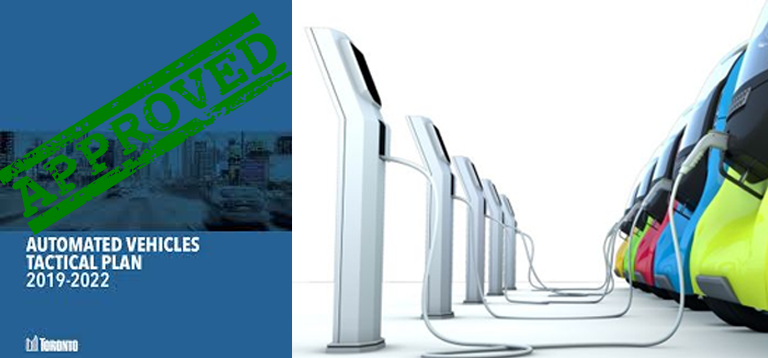Go, Go, Gadget
The City of Toronto’s Automated Vehicles Tactical Plan, which was unveiled Oct. 17 and sets plans to have the city AV-ready by 2022, has been green-lit by the Toronto city council.
The tactical plan was presented to city council officials in Toronto, Ont. on Oct. 29. It outlines a three-year readiness schedule, tests, and other research required to prepare Toronto for the long-awaited arrival of autonomous vehicles.
According to the plan, Toronto will be prepared for the arrival of autonomous vehicles on public roads by 2022. The city’s strategy includes five individual projects, including an automated shuttle trial in the West Rouge neighbourhood, announced by the city in September; specially implemented zones dedicated to autonomous testing and transportation innovation; the development of AV testing responses and incident preparedness (TRIP) protocols; numerous public education initiatives and human interaction tests; and further research and development. The city will even pursue research projects in automated snow removal on sidewalks and the impact of AVs on land-use planning.
“I’m confident that the comprehensive plan adopted on October 29 will ensure we are ready to embrace the benefits of this emerging technology while preparing to confront the challenges that such an innovation will bring,” said Toronto Mayor John Tory.
Manual Meltdown
According to a recent study by J.D. Power, electric car sales have now surpassed stickshift sales in the United States.
The marketing research company inspected U.S. data from 2019’s third quarter to narrow in on a few auto-related transitions, including rising EV sales intersecting with falling manual transmission sales.
According to the data, it seems just 1.1 percent of buyers wanted manuals, while nearly 2 percent were looking to purchase an EV.
Manual transmission sales have been on the decline for quite some time. Many attribute this to the discontinuation of compact and sub-compact sedans, where manuals were often purchased as a lower-cost option. Mazda, Jeep, Subaru and other automakers still offer manual transmissions, but mostly in performance or niche products.
Sustainably Split
According to a recent report, the rapid adoption of electric vehicles in Canada could result in a drop in Canadian oil demand—but it could also cause an 11 percent spike in the nation’s electricity demand.
According to analysts Ernst and Young (EY), the predicted fleet of 13.2 million electric vehicles on Canadian roads by 2030 could result in a reduction in Canadian oil demand. The country currently produces about 4.7 million barrels of oil each day but, if EVs were to represent 30 percent of Canada’s vehicle stock as predicted in 2030, that number could be reduced by up to 250,000 barrels or about 5.3 percent.
However, this rapid adoption plan could also force utilities to make significant investments in existing grid infrastructure. Distribution network upgrades enabling customers to charge their cars at home and in public spaces would improve power transmission across the country, including rural areas.
“A dramatic increase in electricity demand would likely result in new power and utilities players coming to market,” said Daniela Carcasole, EY Canada power and utilities leader. “This could open up a number of collaboration opportunities for existing companies—either through management and administration or joint ventures with hotels, restaurants, technology companies and retail stores to offer easy and convenient vehicle charging for customers.”
Canada is the 10th fastest adopter of EVs in the world, with sales growing more than 165 percent year-over-year in 2018. But the nation’s availability of charging infrastructure, price premiums, battery performance, subsidies and charge time remain key barriers deterring Canadians from purchasing an EV. Even a moderate adoption scenario with 6.5 million EVs on Canadian roads by 2030 would require a 5.5 percent increase in electricity demand.
“Growing electric vehicle adoption is inevitable,” said Carcasole. “By proactively developing strategic plans that position them strongly for the future, companies can avoid analysis paralysis and turn the challenges of this market inflection point into a significant opportunity.”





































